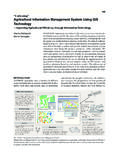Transcription of 2009 Satellite Technology Primer 20070115MJO
1 Page 1 of 18 Satellite Technology Primer SUMMARY This Installation Job Aid covers: BROADBAND Satellite BENEFITS TRUE BROADBAND Satellite INTERNET ARCHITECTURE Satellite ACCESS EQUIPMENT: THE SPACECRAFT Satellite ACCESS EQUIPMENT: CUSTOMER SITE Satellite ACCESS EQUIPMENT: SERVICE PROVIDER GATEWAY ANTENNA POSITIONING BEAM ASSIGNMENT BROADBAND Satellite PROTOCOLS NETWORK ADDRESSES WHAT ALL COMPUTERS SHOULD KNOW PC APPLICATIONS USED TO ACCESS THE INTERNET BROADBAND Satellite BENEFITS The following information reviews the benefits of Broadband Satellite Technology . Step-By-Step Broadband Satellite provides additional benefits over terrestrial access: Ubiquitous coverage: Unlike other broadband access technologies, Satellite -based broadband connectivity provides ubiquitous coverage.
2 Simplicity: Satellite systems bypass the complex web of landline networks. Bandwidth flexibility: Configurable Satellite systems provide capacity on an as-needed or time-scheduled basis. Rapid deployment: Quick initiation of broadband Satellite service is possible after the installation of the customer premise equipment. Reliability: Satellites are among the most reliable of all communication technologies. Page 2 of 18 BROADBAND Satellite INTERNET ARCHITECTURE The following information reviews broadband Satellite Technology architecture. Step-By-Step True Broadband Satellite Internet Architecture With the advent of new Satellite technologies, the network architecture has changed, allowing the customer to use Satellite transmission for both uplink and downlink.
3 This allowed customers to add high-bandwidth, two-way communication applications, like video conferencing, to their Internet experience. This architecture is the focus of today s marketplace. To support the new architecture, the first adapters modified existing satellites and customer equipment to provide a Time Division Multi-Access (TDMA)-based uplink, while still using standard broadcast Technology on the downlink. This method, while workable, has the inherent problems that occur when retrofitting existing hardware to new Technology ; larger processing overhead and generally slower access then desired. Newer true broadband satellites and customer equipment use the more efficient TDMA-based Technology for both uplink and downlink.
4 They typically provide 1 Mbps downstream and 500 kbps upstream. Two-Way Satellite Internet Access Satellite Frequency Bands There are several frequency bands available for the Satellite marketplace. While each of these frequencies has a place in the market, only the Ka-band frequencies support the robust frequency reuse to efficiently support broadband Internet access. Listed below are two common frequencies and their frequency characteristics and usage: Page 3 of 18 Ka-band extends from 27 GHz to 40 GHz and includes the upper part of the Super-High Frequency (SHF) band and the lower part of the Extremely High Frequency (EHF) range, which extends from 30 to 300 GHz.
5 Broadband Satellite systems typically employ the GHz SHF frequency range for uplink transmissions (earth-to-space) and the GHz range for downlink transmissions (space-to-earth). Note that the broadband application actually overlaps a part of the Ku-band in its downlink frequency band. Because the Ka-band frequency is highly concentrated it provides high gain, a narrow beam width and the possibility of multiple beams. Ku-band: Generally considered to extend from 12 to 18 GHz in commercial use this frequency band usually extends to the frequency range from GHz to GHz. Used by most commercial broadcast TV satellites, this is the most commonly used Satellite frequency today.
6 Because Direct Broadcast Satellites use the Ku-band frequencies, DBS installers are most familiar with aligning antennas to the Ku-band frequencies. The graphic below compares the Ku-band and the Ka-band frequencies. Note that the degree of azimuth is considerably smaller in the Ka-band. This translates to a need for more precise customer transmitter/receiver placement. Broadband Satellite Spot Beams While a conventional Satellite using Ku-band will use a single downlink beam to cover a single area on the earth, a broadband Satellite , using Ka-band, will use multiple Spot-beams to provide the same coverage. Each of the circles in the graphic below is equivalent to a "cell" in a cellular telephone network and allows multiple reuse of the frequency spectrum.
7 On average, a broadband Satellite will provide 35 to 45 subscriber spot-beams and about six Gateway Earth Station spot-beams; about one Gateway spot-beam for every seven or eight subscriber spot -beams. Transmissions in a subscriber spot-beam are to/from the subscriber side terminal. Transmissions in a Gateway spot-beam are to/from a service provider ground station. The graphic below shows a typical spot-beam layout for the United States from a broadband Satellite . Note that a conventional Satellite , using Ku-band, would have only one beam for the entire United States. Page 4 of 18 Broadband Satellite Bent-pipe Architecture Broadband satellites combine spot-beam Technology with links that operate on a point-to-point basis.
8 The Satellite uses on-board switching to provide two-way data paths between different spot beams and allow for reuse of the Beam Carrier Frequencies. The bent-pipe architecture allows the Satellite processor to concentrate on building the data-paths because the Satellite acts as a repeater. In the Satellite , the data-path signal is received, retuned, amplified, and retransmitted but there is no demodulation, decoding or other type of signal processing. The Satellite divides uplinks and downlinks to user links, the up/down links between the subscriber terminal and the Satellite , and feeder-links, the up/down links between the Satellite and Gateway.
9 Bent-pipe Technology in the Satellite switches a user uplink and a feeder downlink together to form the upstream data path between the customer and the service provider. The same Technology switches the downstream user downlink and the upstream feeder link together to form the downstream data path between the customer and the service provider. The combination of the upstream and downstream data paths connected to a single Gateway form a sub-network. These sub-networks are a part of the larger service provider network, interconnected with fiber rings, providing access to the Internet. The graphic below shows a portion of a broadband Satellite network.
10 Note that user links and Gateway links actually consist of one uplink and one downlink. A single line in the graphic displays an upstream and downstream data path. Page 5 of 18 Page 6 of 18 Satellite ACCESS EQUIPMENT: THE SPACECRAFT The following information reviews the Technology the Satellite uses to provide broadband services. Step-By-Step At the center of the new Broadband Satellite Networks are high-powered GEO satellites 22,300 miles above the equator operating in Ka-band (20-30 GHz) mode. Current Satellite Internet Access Satellite Capacity As the demand for Satellite capacity has steadily increased, traditional broadcast Satellite Technology using Ku-band (11-14 GHz) frequencies becomes limiting.










